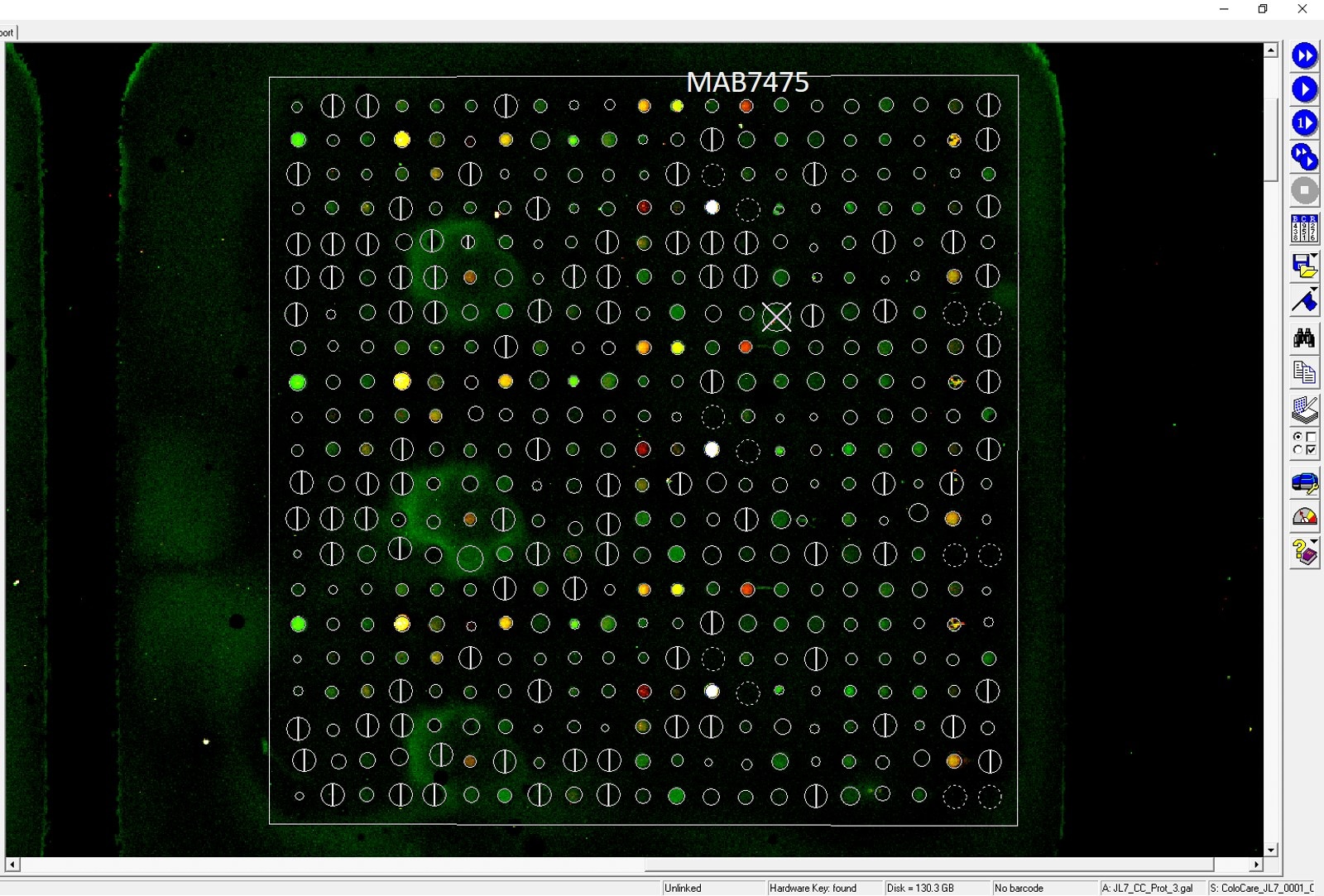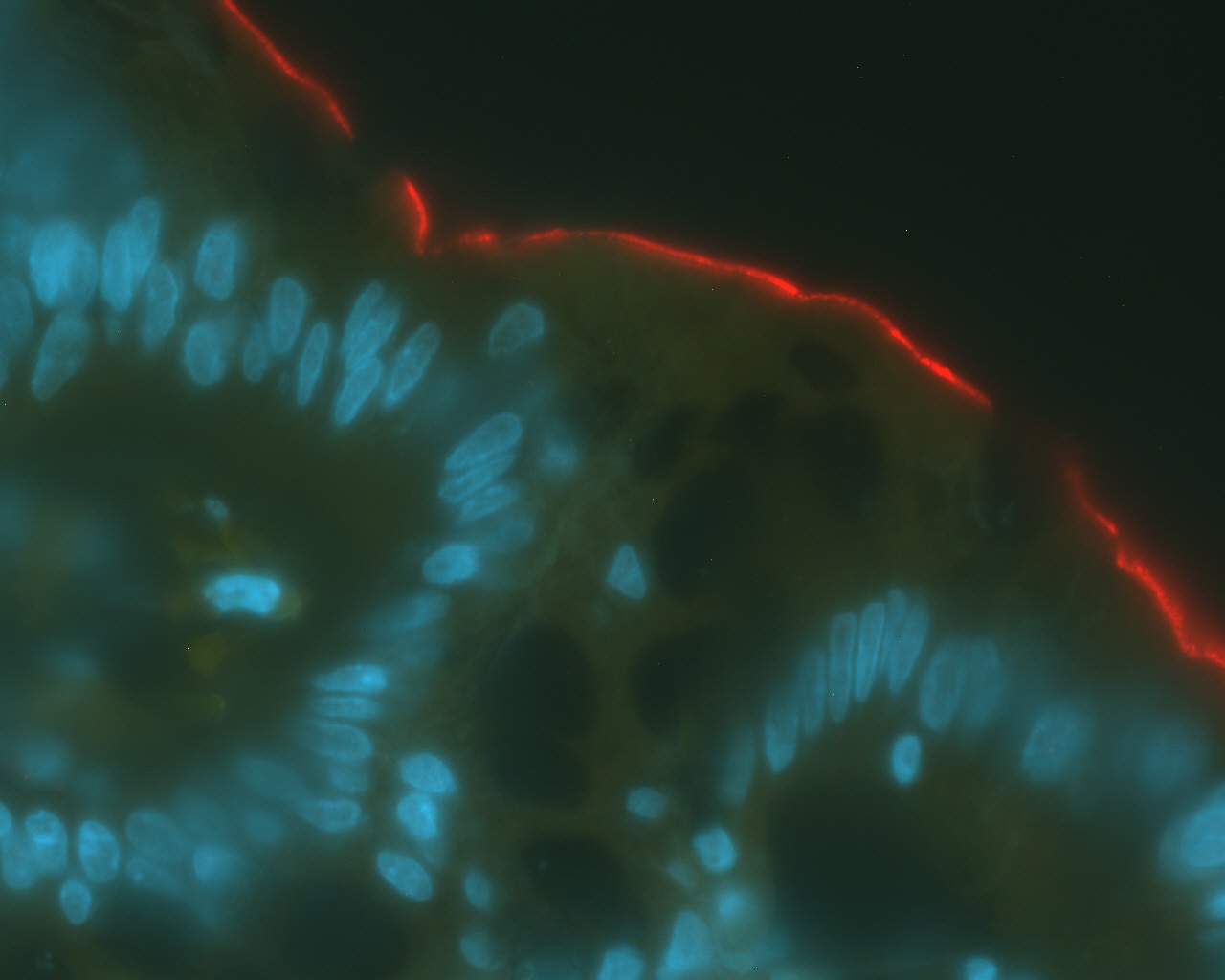Human/Rat PTPπ/PTPRU Antibody Summary
Glu19-Gln740
Accession # Q92729
Applications
Please Note: Optimal dilutions should be determined by each laboratory for each application. General Protocols are available in the Technical Information section on our website.
Scientific Data
 View Larger
View Larger
Detection of Human and Rat PTPπ/PTPRU by Western Blot. Western blot shows lysates of human brain (cerebellum) tissue and rat brain tissue. PVDF membrane was probed with 0.5 µg/mL of Mouse Anti-Human PTPp/PTPRU Monoclonal Antibody (Catalog # MAB7475) followed by HRP-conjugated Anti-Mouse IgG Secondary Antibody (Catalog # HAF018). A specific band was detected for PTPp/PTPRU at approximately 180-200 kDa (as indicated). This experiment was conducted under reducing conditions and using Immunoblot Buffer Group 1.
Reconstitution Calculator
Preparation and Storage
- 12 months from date of receipt, -20 to -70 °C as supplied.
- 1 month, 2 to 8 °C under sterile conditions after reconstitution.
- 6 months, -20 to -70 °C under sterile conditions after reconstitution.
Background: PTP pi/PTPRU
Protein Tyrosine Phosphatase, receptor type U (PTPRU), also called PCP-2 or PTPp, is an approximately 180 kDa type I transmembrane glycoprotein that is a type IIb receptor-like protein tyrosine phosphatase (PTPR). The 731 amino acid (aa) extracellular domain contains MAM, Ig-like C-type and Fibronectin III domains that often mediate cell adhesion, but unlike other family members, PTPRU does not appear to mediate homophilic cell aggregation. It does, however, antagonize Wnt signaling in adherens junctions by inhibiting beta -catenin-mediated gene transcription. Human PTPRU shares 95% aa sequence identity with mouse and rat PTPRU within the extracellular domain, and up to 60% aa identity with other human family members. Isoforms of 1436, 1440 and 1433 aa are altered within the cytoplasmic domain as compared to the 1446 aa full-length form. Several tissues contain detectable amounts of PTPRU mRNA.
Product Datasheets
Citations for Human/Rat PTPπ/PTPRU Antibody
R&D Systems personnel manually curate a database that contains references using R&D Systems products. The data collected includes not only links to publications in PubMed, but also provides information about sample types, species, and experimental conditions.
4
Citations: Showing 1 - 4
Filter your results:
Filter by:
-
Comparative study of oral versus parenteral crocin in mitigating acrolein-induced lung injury in albino rats
Authors: WA Rashad, S Sakr, AM Domouky
Oncogene, 2022-06-17;12(1):10233.
Species: Rat
Sample Types: Tissue Homogenates
Applications: ELISA Detection -
Suppression of nuclear factor erythroid-2-related factor 2-mediated antioxidative defense in the lung injury induced by chronic exposure to methamphetamine in rats
Authors: Yang Bai, Yun Wang, Ming Liu, Yu-Han Gu, Bin Jiang, Xu Wu et al.
Molecular Medicine Reports
-
MicroRNA-574-5p promotes metastasis of non-small cell lung cancer by targeting PTPRU
Authors: Rui Zhou, Xiaoshu Zhou, Zhongyuan Yin, Jing Guo, Ting Hu, Shun Jiang et al.
Scientific Reports
-
Tumor invasion and metastasis regulated by microRNA-184 and microRNA-574-5p in small-cell lung cancer
Authors: Rui Zhou, Xiaoshu Zhou, Zhongyuan Yin, Jing Guo, Ting Hu, Shun Jiang et al.
Oncotarget
FAQs
No product specific FAQs exist for this product, however you may
View all Antibody FAQsReviews for Human/Rat PTPπ/PTPRU Antibody
Average Rating: 4 (Based on 2 Reviews)
Have you used Human/Rat PTPπ/PTPRU Antibody?
Submit a review and receive an Amazon gift card.
$25/€18/£15/$25CAN/¥75 Yuan/¥2500 Yen for a review with an image
$10/€7/£6/$10 CAD/¥70 Yuan/¥1110 Yen for a review without an image
Filter by:



